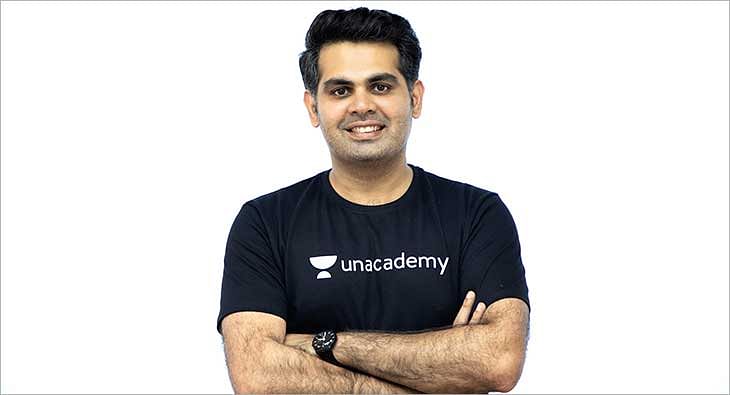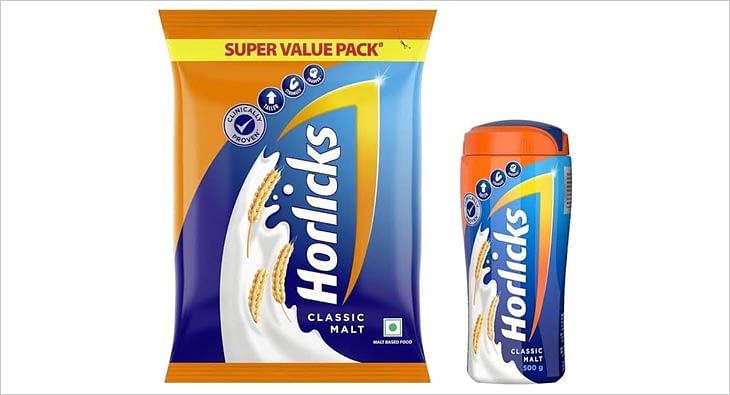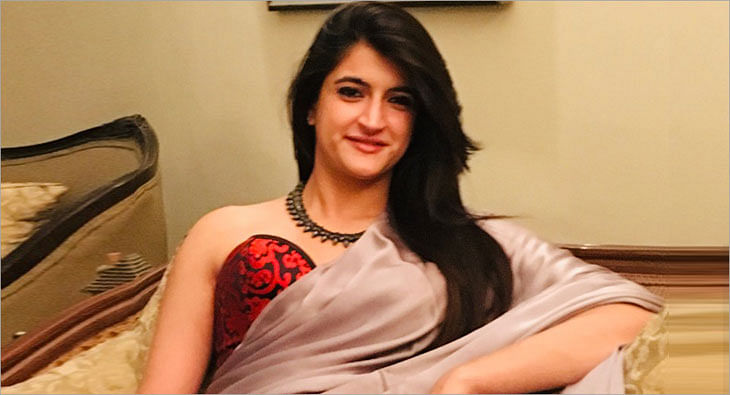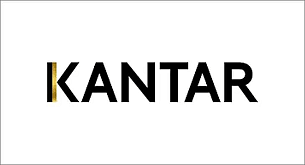60% of Unacademy’s ad spends is towards TV: Karan Shroff, VP, Marketing
Shroff talks about Unacademy’s ATL campaign ‘Let’s Crack It’, marketing strategies, media mix and more

A report launched by Google and KPMG in 2017 - ‘Online education in India: 2021’ states that the Ed Tech market will grow around 9 times to hit $1.96 billion by 2021.
Unacademy, a major player in this market, recently launched their first-ever ATL campaign to mark the beginning of a 360-degree campaign – ‘Let’s Crack It’. Through the three TVCs, Unacademy encourages students to prepare for challenging entrance exams without getting demotivated or disheartened.
Unacademy was founded in 2015 by Gaurav Munjal, Roman Saini and Hemesh Singh and brings expert educators together with millions of students in need of quality education.
In conversation with exchange4media, Karan Shroff, VP, Marketing, Unacademy, spoke about the ATL campaign, marketing strategies, the media mix, goals and more.
Edited excerpts:
On Unacademy’s vision
We had our beginning as a YouTube channel by Gaurav Munjal in 2010. Today we clock over 160 million views a month across our channels and the ecosystem of Unacademy is growing rapidly. There are many students across the country from Tier 2 and 3 cities and smaller towns, also women who are not allowed to go out of home to study. The penetration of 4G has benefited a lot of brands like us. We moved in that direction, where we wanted to democratise education. Today we have some beautiful success stories coming through from smaller towns, where someone sitting in Tier 2 and 3 cities are learning from the best educators. That’s been the vision - we want to further penetrate, strengthen and expand our territories and get every student out there onto the Unacademy platform.
On the ‘Let’s crack it’ campaign
When we were conceptualising the campaign, we really dwelled on everything that's happening in the education space. I was fairly new in the system and was very strongly guided as well as supported by my team and the founders. So it was a collective beautiful team effort that came into existence. When we were doing research, we realized that there is an extensive pressure on the students. There is so much pressure and a lot of unfortunate cases keep happening. We didn't want to be another brand that's going to talk about the same thing. We wanted to be a brand that wants to be close to the consumer, a brand that understands students and someone that a student feels secure with.
A comment by a student said: “I am seeing a campaign, which is from our eyes.” All the three ads or creatives are about students and their journeys of life.
We also launched an anthem as part of the second phase of the ‘Let’s Crack It’ campaign. The anthem has been sung by Naezy (Naved Shaikh of Gully Boy fame) and is an ode to students’ hard work and perseverance while preparing for exams. Apart from it being a colloquial expression, Unacademy wanted to emphasize the ‘let’s’ part of the catchphrase as the company is democratizing education by creating a platform for students where there are no differential pricing or rank based batches.
On marketing strategies and media mix
We spend the majority of our advertising budget on Television. The digital and OTT platforms are very well accepted in the metros and the top cities of the countries. But TV dominates in Tier-2, Tier 3 and Tier 4 cities. We also learned that these students are more hungry for growth and success. A lot of our students come from Metros and hence digital was what we took into play in these cities.
Our 60 per cent ad spends would be towards TV, 15 towards Digital and the rest for OOH, Print media, Radio and Cinema.
We do very well in OOH campaigns especially in smaller towns. We have extensive presence and reach in student hub cities like Kota. We also use cinema as we learnt that students in these small towns walk into cinemas very frequently. So, it is a 360-degree campaign and has given some brilliant results for Unacdemy.
On ed-tech sector in India
I think one of the challenges across the Ed tech industry would be changing the mindset of moving people to learn online. A larger section of students across the country are hesitant or have an element of fear to clear their doubts. Online education platforms help the student to overcome that fear. Also, not all students learn very quickly, everybody has a different style. If a student is a slow learner and the class moves on it's left recorded for you to go back and visit, revise and clear your doubts. Also, every teacher has a different style of teaching, every student has a different style of learning, you can choose the teacher and what style works for you.
What next for Unacademy?
I think we want to be number one in every aspect. Currently, we are present in 30 exam categories and I believe growth is good for every business. We would want to expand into more categories. With the ATL campaign coming in we witnessed some jump in the number of consumers and would want to have more students on board. We want to become a household name when it comes to education.
Read more news about Marketing News, Advertising News, PR and Corporate Communication News, Digital News, People Movement News
For more updates, be socially connected with us onInstagram, LinkedIn, Twitter, Facebook Youtube, Whatsapp & Google News
About 60% Instagram influencers in India have fake followers: Report
As per a media report, influencer marketing platform KlugKlug has found that only 2.48 million profiles out of the 8 million have ‘high-quality’ followers
Two of three Instagram influencers in India have more than 60 per cent fake followers, a report by influencer marketing platform KlugKlug shows.
This is particularly true for the beauty and fashion sector, the report noted.
Other countries that have influencers with fake followers are Brazil, the UAE and Indonesia.
As per media reports, such Instagram fake followers can be roped in for as little as Rs 10 to a high of Rs 1,000.
According to Klug Klug India, only 2.48 million profiles out of the 8 million have high-quality followers.
A number of other categories have also been buying fake followers, media reports have noted.
As per a media expert, quoted in the reports, brands are finding it difficult to identify and curb the menace of fake followers and bots.
In a recent setback for influencers the Central Consumer Protection Authority (CCPA) has said those promoting activities like gambling and betting are equally liable as the companies promoting the same.
15% consumers enhance their user experience through virtual assistants: Kantar report
According to Soumya Mohanty, Managing Director & Chief Client Officer- South Asia, Insights Division, Kantar, less than 1% of ads get tested due to lack of time
Marketing data and analytics firm Kantar has unveiled a report that studies the burgeoning AI market to dish out actionable insights for marketers. Within AI, virtual assistants are the fastest growing segment. The report noted that 15% consumers enhanced their ‘user experience through virtual assistants’. This segment is the fastest growing at 27% YoY.
According to the study, while ‘fitness’ and ‘social media’ apps are amongst the leading categories, driving AI adoption (with an average of 2.3 AI led features embedded in these applications), segments like ‘BFSI’, ‘job search’ and ‘short video’ apps are relatively slow in AI adoption, with an average of 1.2 features each. Entertainment apps, digital commerce and pharmacy apps stand somewhere in the middle with 2.0 & 1.8 AI features being adopted, respectively.
Additionally, the report said that while 90% of marketing and sales leaders think their organisations should be using AI “often”, 60% said their organisations “rarely or never” do. Speaking to exchange4media, Soumya Mohanty, Managing Director & Chief Client Officer- South Asia, Insights Division, Kantar highlighted that currently there are a lot of organisations who know that there is something called AI, but haven’t yet figured out how it could help them holistically.
“A lot of the AI just gets used for efficiency purposes, so repetitive tasks get automated,” Mohanty pointed out. Data also plays a big role in why certain organisations are struggling with how to use AI.
For instance, Mohanty explained that in segments like D2C, telecom etc. there is a lot of primary or first-party data. So being able to leverage AI also gets easier. “It's the traditional large sort of FMCG type companies where data sits in silos. You don't really have one single source of data where it's a little difficult to use the full power of AI, because the full power of AI also needs a lot of data sitting in a structure that you can use,” she added.
So, can AI help marketers have a unified view of data? No, says Mohanty. “AI does not help marketers get a unified view of data. Once you have data in a unified way, AI can help you do a lot more with that data.”
According to her, organisations today need to have good, strong data warehousing. “It needs to make sense because a lot of the silos are also because everybody owns one part of it. A lot of people have their own analytics teams internally, so there are a lot of agendas and stakeholders. And then we say data is in silos because fundamentally, when you're doing something internally, different people have different stakes in it,” Mohanty added.
Puneet Avasthi, Senior Executive Director, South Asia, Insights Division, Kantar shared that most organisations are now heavily investing in creating first-party data sets. “Companies that have first party data about their consumers and transactions or interactions that they have with the brand are going to be able to leverage that more effectively to create sharper profiles for the brand as such for the consumer and build relevant recommendations at the right moments.
Panning out she also highlighted how AI can be leveraged to enhance market research and make it more accessible, a part of which Kantar is itself involved in. “A lot of times people say that we can't test an ad because we don't have time. So less than 1% of advertising gets tested and just gets put out. Does it work when it gets put out? It is the question the audience should answer, because so many times, it backfires,” Mohanty shared. Apparently, digital particularly doesn't get tested because organisations just do a/b testing and leave it at that.
Speaking of preferred use cases of AI, Avasthi added that various businesses and brands are looking at creating an experience for the brand that is in line with the brand's architecture and progress across all touch points. “That is something that the AI engines that are working behind can ensure, that all such interactions are consistently delivered across different virtual assistants or chatbots that are available to the consumer,” he said.
The other use case, according to Avasthi, is ensuring that there is greater visibility for the brand in the digital sphere as such, through various recommendation engines, when a certain need is being looked for and to throw up the right kind of information about the brand so that the brand message is amplified in the mind of the consumers.
Among other insights from the Kantar AI report is that 88% consumers used AI based algorithms which analysed their preferences, behaviours, and interests to create personalised recommendations for tailored experiences. This segment grew at 6 % YoY. At 21%, ‘smart home automation’ is a smaller segment but growing at 25% YoY.












 Share
Share
